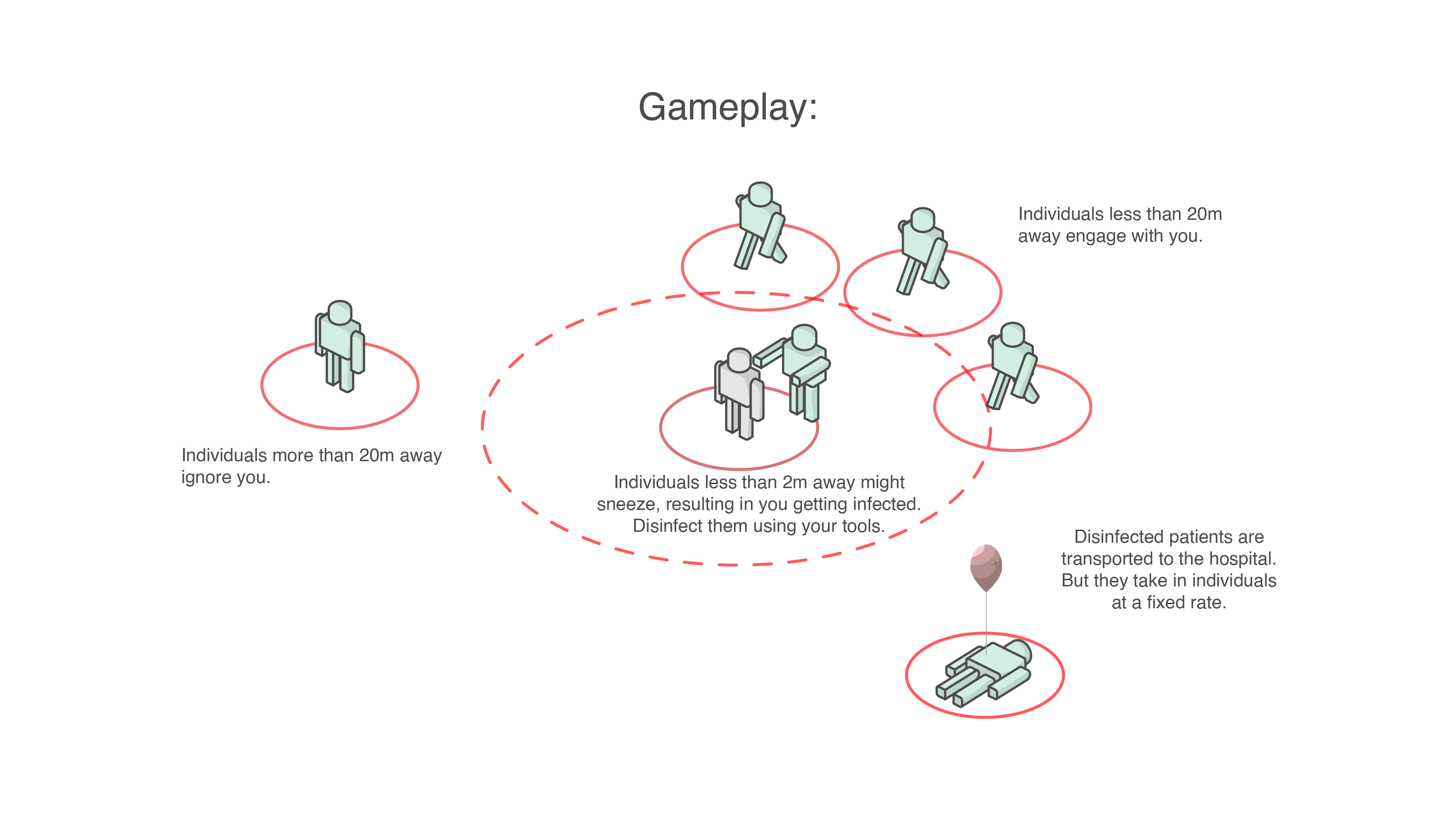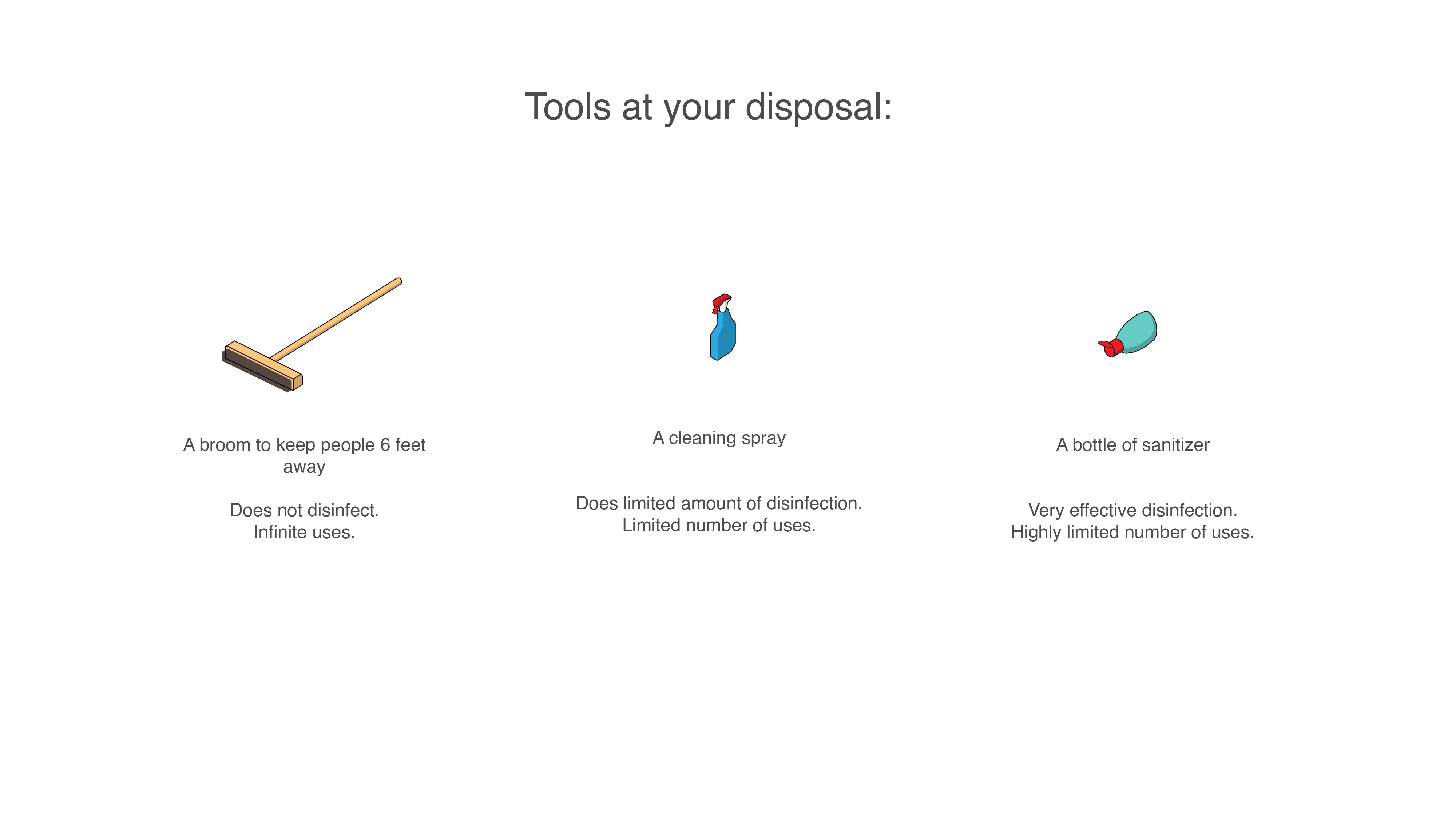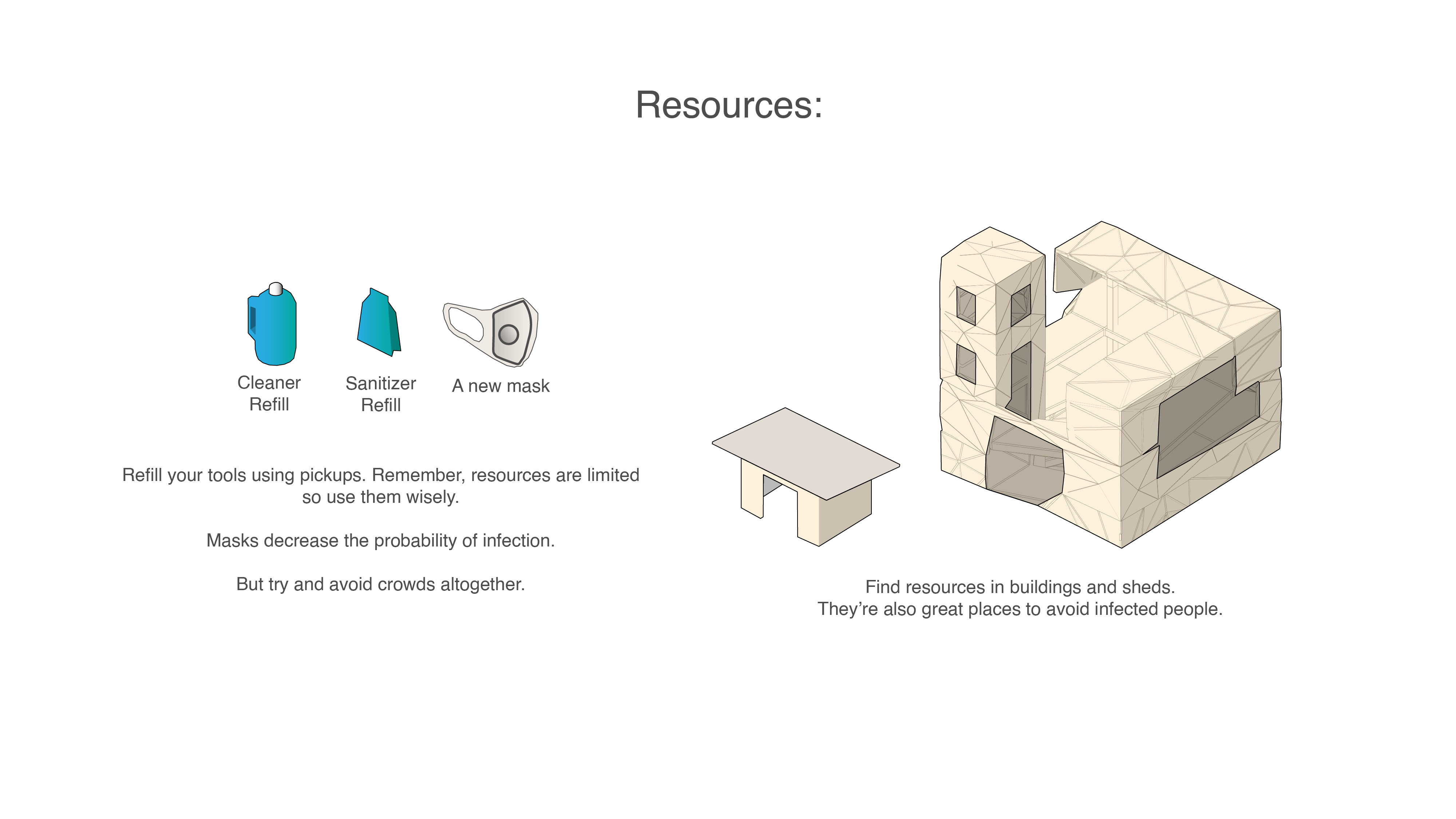Video-game, 2020
Personal Work, Individual exploration
Six Feet Away
Unity, C#
Introduction
In light of the COVID-19 pandemic, a question that I was very intrigued by was how or what mechanism can be used to inform individuals about the crisis. A simulator like experience would be ideal, but I pursued a more active first person experience of making a game stressing on the lack of resources and how futile the entire idea of having a partial lockdown is.
Game design
The general motivation for player progression is by the AI of the game, constantly hounding and sneezing when they come into proximity of the player. This becomes the main driver of gameplay forcing the player to move around and relocating to gain a “tactical” advantage.

What can the player interact with?
The tools are the second most important layer of the game as to how the player interacts with the world. Personally, although our fight against the virus is one fraught with loss and nothing less of a solemn journey. Spreading the message and increasing player growth required injection of a light-hearted tone. Here, most of the tools have a humorous spin on them, from the spray bottle to the broom which is used to barricade against the infected agents.

Gameplay that is rewarded
Lastly, touching upon the idea mentioned before about a “tactical” advantage. The idea that refuge spaces such as buildings and sheds have pickups are gameplay cues as to encourage players to go there. The tools at the disposal of the player encourage the player to either barricade them selves by virtue of using a broom or by ‘camping’ to avoid agents in the towers. Both of which, albeit dramatizes, but underscores our battle against the corona virus.

Why create a procedural game?
From a gameplay point of view the objective is to survive as long as possible. The core gameplay loop could not
have been simpler. What perhaps is rather interesting is to create some level of replay ability and bake in the
aspect of scarcity into the game. The buildings as mentioned before serve as safe havens for the player
providing resources and keeping them safe. Thus this becomes one of the least available gameplay area, open
areas incentivizing players to find the “safe” tiles becomes the main loop of the game.
To achieve this, a simple probabilistic mechanism to generate the procedural map is employed.
Tiles are procedurally spawned around a player.
The spawned tiles are selected randomly from a list of tiles already created before. In effect making it so that if we create less of a possible tile, the lesser the probability of it spawning thus making it scarcer.

This also reduces the compute time for navigation and path-finding meshes as they are prebaked and attached to the tile.